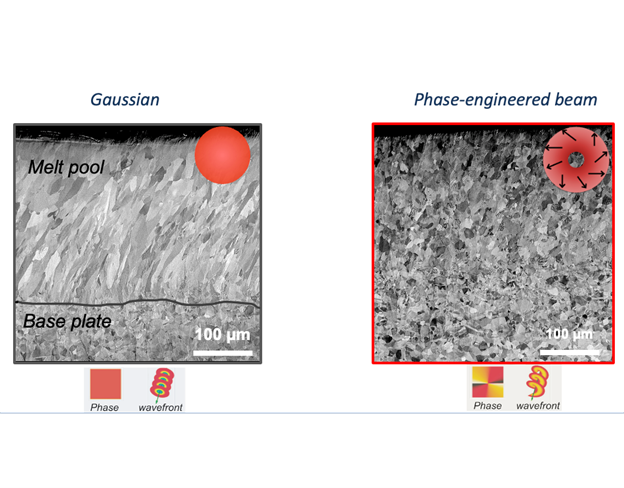Parts fabricated by additive manufacturing (AM) typically have mechanical properties that differ from parts produced by conventional manufacturing. There may be microstructural differences such as the presence of elongated grains or high concentrations of dislocations in an AM part. Of the different metal AM methods, laser powder bed fusion (LPBF) presents particular challenges due to the relatively small-sized powders (typically 10 - 50 um) used and the interactions of the metal with the tightly focused laser. Common defects, such as incomplete melting, gas porosity, and high residual stresses, are difficult to avoid and present significant challenges to printing reliability.
These challenges often result in small windows of acceptable processing parameters that can give the optimal properties. Optimizing one property will often deteriorate another property, i.e. optimizing density can decrease microstructure uniformity or residual stress. Conversely, improving microstructure uniformity can decrease density.
A large contributor to these issues is that the typical LPBF laser beam profile used have a Gaussian shape; these beams are non-optimal for the laser AM process because of laser-material interactions during printing that are undesired such as keyholing (laser-vapor interactions), spatter and porosity (melt pool instabilities) and anisotropic mechanical properties (large thermal gradients). In metal AM using directed energy deposition or in laser-welding processes, there is a need for controlling the melt pool shape, depth, and flow, which can be achieved by beam shaping.
LLNL researchers have developed a novel system that can shape the profile of the laser beam during printing or welding. The phase engineered approach in beam shaping enables in situ process control of its energy distribution at melt-relevant timescales.
Image Caption: SS 316L L-PBF melt pool engineered with LLNL beam shaping demonstrate control of microstructure grain refinement (right)
Refinement of metallic grain structure grants control in the printing or welding process. Arbitrary grain refinement allows LPBF printed parts to mimic mechanical properties of forge cast parts. LLNL’s system is less expensive compared to multi-laser systems with faster scanning and higher energy density. With improved speed, control, and higher energy density the process window is widened when LLNL’s novel approach is applied.
metal additive manufacturing, laser welding
Current stage of technology development:
TRL ☐ 0-2 ☒ 3-5 ☐ 5-9
LLNL has filed for patent protection on this invention.


